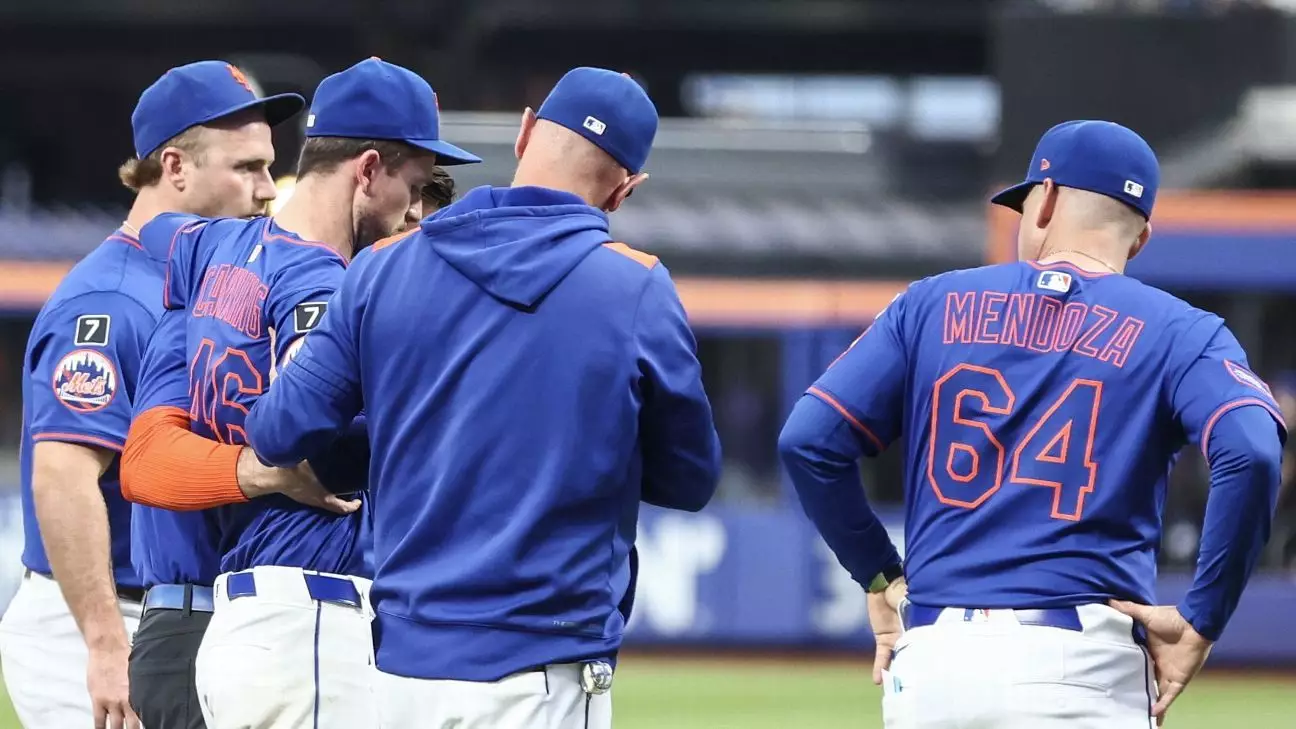The New York Mets’ pitching woes worsened dramatically during their recent game against the Atlanta Braves. Right-hander Griffin Canning, who had been a bright spot for the team this season, suffered a probable Achilles injury in a noncontact incident early in the game. Canning’s injury, confirmed pending an MRI, came unexpectedly as he responded to a routine ground ball. His visible pain and inability to walk off the mound on his own illustrated the severity of the situation, instantly alarming both teammates and fans.
Canning had been a critical component of the Mets’ rotation, showing notable improvement compared to his less effective previous season with the Angels. At 29, and currently sporting a respectable 7-3 record with a 3.77 ERA this year, Canning was stabilizing what had been an inconsistent rotation. His sudden loss not only diminishes the team’s on-field competitiveness but also compounds an already dire health situation within the pitching staff.
Mounting Injury Crisis Throws Rotation into Disarray
The Mets find themselves grappling with what can only be described as an injury epidemic. Canning is the third pitcher in their Opening Day rotation to succumb to an injury in the past two weeks, a stretch during which the team’s performance sharply declined, posting a discouraging 4-10 record. Ace Kodai Senga has been sidelined since mid-June due to a right hamstring strain, and Tylor Megill has not pitched since June 14 following an elbow sprain.
Adding to the instability, left-hander Sean Manaea—a potential rotation returnee—has experienced setbacks after a promising rehab, now facing a bone chip in his elbow. Despite managerial optimism about Manaea’s rehabilitation, the timeline remains uncertain. The revolving door of pitchers entering the injured list undermines any rhythm the Mets might have hoped to establish this season.
What This Means for the Mets’ Strategy Moving Forward
The pitching injuries highlight deeper structural vulnerabilities within the Mets’ roster management and their long-term approach to rotation depth. Relying heavily on a handful of starters without sufficient contingency plans has exposed the team to significant risk. Given the extent of the injuries, the Mets’ front office and management must rapidly adapt, exploring options for internal promotions, trades, or acquisitions to patch the gaps.
Frankie Montas’ recent return from a lat injury, marked by a solid five scoreless innings performance, offers a glimmer of hope. However, relying on a single returnee is inadequate when the rotation depth is so critically compromised. Historically, teams that face widespread injuries to their starting pitchers struggle to maintain consistency and fail to compete at the highest level, regardless of offensive firepower.
A Mental and Physical Test for the Mets
Beyond the tactical and roster implications, this injury plague presents a profound test of resilience for the Mets as a team. Pitching talent is not unlimited, and the mental toll on both players and coaches can be significant. Pitchers like Canning, who had been a key contributor through his steady performances, are irreplaceable in intangible ways—they’re anchors that set the tone on and off the mound.
For younger players thrust into starting roles prematurely or unfamiliar relievers called to extend innings, the pressure intensifies. The coaching staff faces the challenge of maintaining confidence and cohesion in a fragmented rotation, while also adjusting game plans to cover for depleted personnel.
Reevaluating Long-Term Pitching Health and Development
The Mets’ current situation raises critical questions about the organization’s approach to pitcher health and development. Achilles injuries, hamstring strains, bone chips—these aren’t isolated ailments but symptoms of a pitching staff that may be overextended or insufficiently conditioned for sustained workloads. It also underscores the essential need for investment in medical, training, and preventive measures to protect pitchers’ bodies.
The Mets embarked on the season with high hopes, banking heavily on their pitching rotation to anchor their success. But as injuries mount, management must scrutinize strategies not only for immediate fixes but for fostering a more durable patch of pitchers who can bear the season’s rigors without frequent setbacks.
The journey ahead for the Mets is undeniably steep. While setbacks like Canning’s injury temporarily dim the prospects, the way this team navigates these challenges will define their character and potential for future growth. For now, the Mets are at a crossroads where injury management, tactical creativity, and organizational patience will be as crucial as the talent on the mound.

